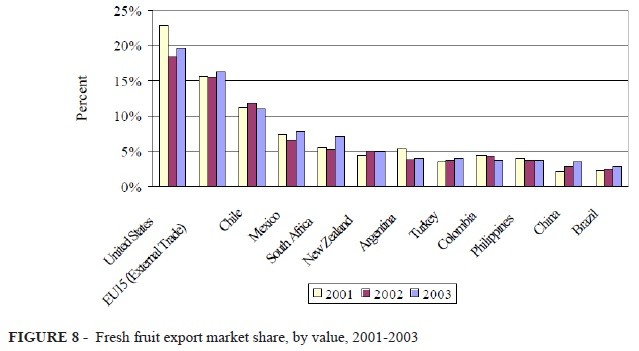Mexico could be the new China
Post on: 16 Март, 2015 No Comment

Despite all its challenges, including the media focus on drug cartels and border issues with the United States, Mexico has been on the rise. China, for many years a manufacturing and exporting powerhouse, has ceded some of its business to Mexico.
The
As the globalization movement matures, countries like Mexico are becoming more capable and competitive. Consumers in the US may become more accustomed to Made in Mexico labels rather than Made in China.
Mexico is Latin America’s second-largest economy. According to a Financial Times report during the first half of this year, Mexico accounted for 14.2 per cent of manufactured imports into the US, the world’s largest importer. In 2005, Mexico’s share was just 11 per cent. Surprisingly, China, which gained huge chunks of the US import market for many years, has started to lose ground. From a high of 29.3 per cent of the total at the end of 2009, it has now shrunk to 26.4 per cent.
Also from the FT: While winning a bigger slice of the US market, Mexico has diversified its customers. A decade ago, about 90 per cent of the country’s exports went to the US. Last year, that figure fell to less than 80 per cent. Suddenly, it seems, Mexico has become the preferred center of manufacturing for multinational companies looking to supply the Americas and, increasingly, beyond. Today, Mexico exports more manufactured products than the rest of Latin America put together.
For those readers who have been watching Mexico and Mexico-oriented investments the past few years this may come as no surprise. A comparison of two ETFs. the iShares MSCI Mexico Investable Market Index ETF (EWW, quote ) and the iShares FTSE/Xinhua China 25 Index ETF (FXI, quote ) provide an interesting perspective for investors.
In the chart above, which goes back to the stock market bottom of March 2009, we see that both ETFs have risen since the market crashed.  FXI however peaked in late 2010 and is trading significantly lower today.
EWW on the other hand has traded recently as high as at any other point since March 2009.
An eight-year chart further enhances ones understanding of this dynamic.  Prior to the financial crisis both ETFs were performing well reflecting the general prosperity in both developed and developing economies.  FXI was doing better, but then again that was expected as the focus of emerging market investors at that time was primarily BRIC oriented.
Today we have the MIST  countries and an out-performing Mexico.  I suspect that we will see more manufacturing coming back to the Americas.  There is evidence that regional proximity between manufacturer and consumer is becoming a priority consideration again.  If Mexico can maintain its appeal with competitive labor costs and reasonable regulatory environment then we may see more of the same.
But with the US as Mexico’s biggest customer and significant uncertainties regarding the US’ economic future it is very questionable if the performance of EWW and other Mexico related investments will be as good in the future.  A recession in the US will dampen results from Mexican exporters.  Caution is advised until the US gets its act together.














